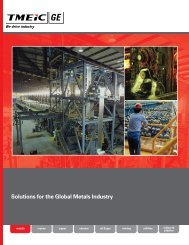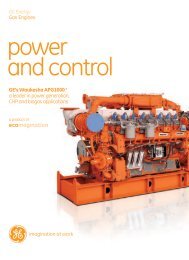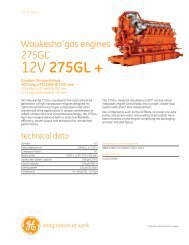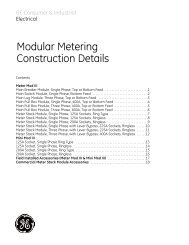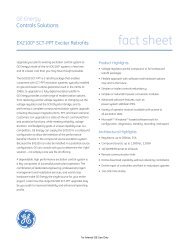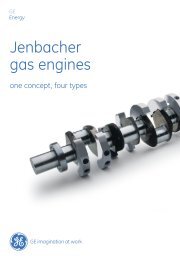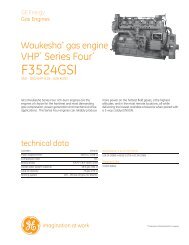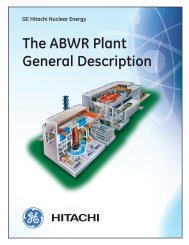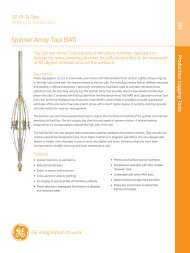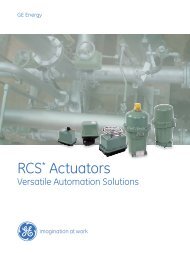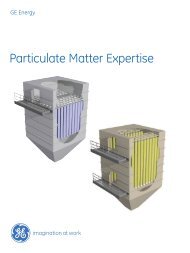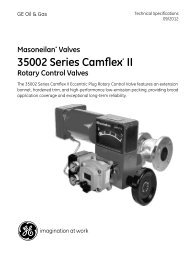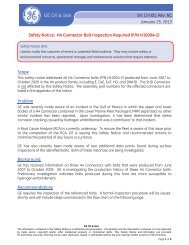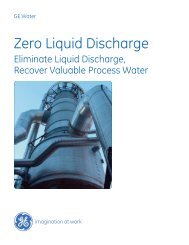Masoneilan SVI II AP Installation and Maintenance ... - GE Energy
Masoneilan SVI II AP Installation and Maintenance ... - GE Energy
Masoneilan SVI II AP Installation and Maintenance ... - GE Energy
Create successful ePaper yourself
Turn your PDF publications into a flip-book with our unique Google optimized e-Paper software.
Padj (%)<br />
Position<br />
Compensation<br />
Damping Coefficient<br />
Dead Zone(%)<br />
Quick Opening<br />
Relay, Pneumatic<br />
Safe Area<br />
Sig Hi<br />
Sig Lo<br />
Single Acting<br />
Split Range<br />
STOPS<br />
Valves often have significantly different response when filling<br />
versus exhausting. The proportional gain is adjusted by adding<br />
Padj to P when the valve is exhausting. Padj is normally less<br />
than P.<br />
The response of the valve is different when the valve is nearly<br />
closed Coefficient than when the valve is nearly open. The position<br />
compensation coefficient, which is a number between 0<br />
<strong>and</strong> 9, allow the control algorithm to optimize the valve<br />
response.<br />
The valve response can be made slower for some applications.<br />
A value of 0 gives no damping, <strong>and</strong> a value of 9 gives maximum<br />
damping of valve motion.<br />
When the valve position is within the setpoint +⁄- the dead zone,<br />
no additional position control is performed. This value is normally<br />
0%, however for high friction valves (e.g. valves with<br />
graphite packing) a higher dead zone helps avoid limit cycling<br />
due to the stick⁄slip action of the valve. In these cases the dead<br />
zone chosen might be 0.2% to 1%.<br />
(see Characteristic)<br />
The component that amplifies the pneumatic control signals to<br />
provide a wide range of actuation pressure <strong>and</strong> to supply <strong>and</strong><br />
vent at high flow rates for responsive control.<br />
The area of a plant where there never is an explosion hazard<br />
present, such as the control room or a wire marshalling rack<br />
area.<br />
In the <strong>SVI</strong> <strong>II</strong> <strong>AP</strong> configuration, the input current setting at which<br />
the valve is fully open (ATO) or fully closed (ATC).<br />
In the <strong>SVI</strong> <strong>II</strong> <strong>AP</strong> configuration, the input current setting at which<br />
the valve is fully closed (ATO) or fully open (ATC).<br />
The action of a position with a single pneumatic output for operation<br />
with a spring return actuator. (see double acting).<br />
A control configuration where a single control output is sent to<br />
two or more control valves. Each control valve positioner is calibrated<br />
to respond to a separate portion of the control signal. An<br />
example is a steam valve <strong>and</strong> a cooling water valve arranged to<br />
be both closed at 50% <strong>and</strong> the steam valve to open.<br />
The <strong>SVI</strong> <strong>II</strong> <strong>AP</strong> runs STOPS procedure to adjust the positioner to<br />
actual valve travel. First the output pressure is reduced to zero<br />
<strong>and</strong> the position is recorded. That position corresponds to 0%.<br />
The output pressure is raised to its maximum based on supply<br />
pressure. The position is recorded <strong>and</strong> corresponds to 100%.<br />
177



